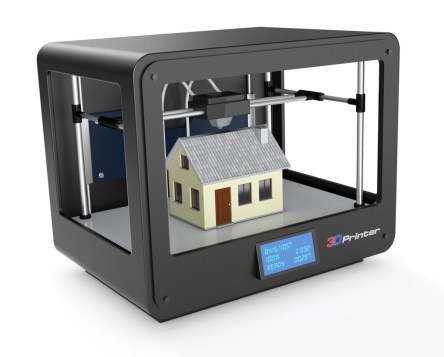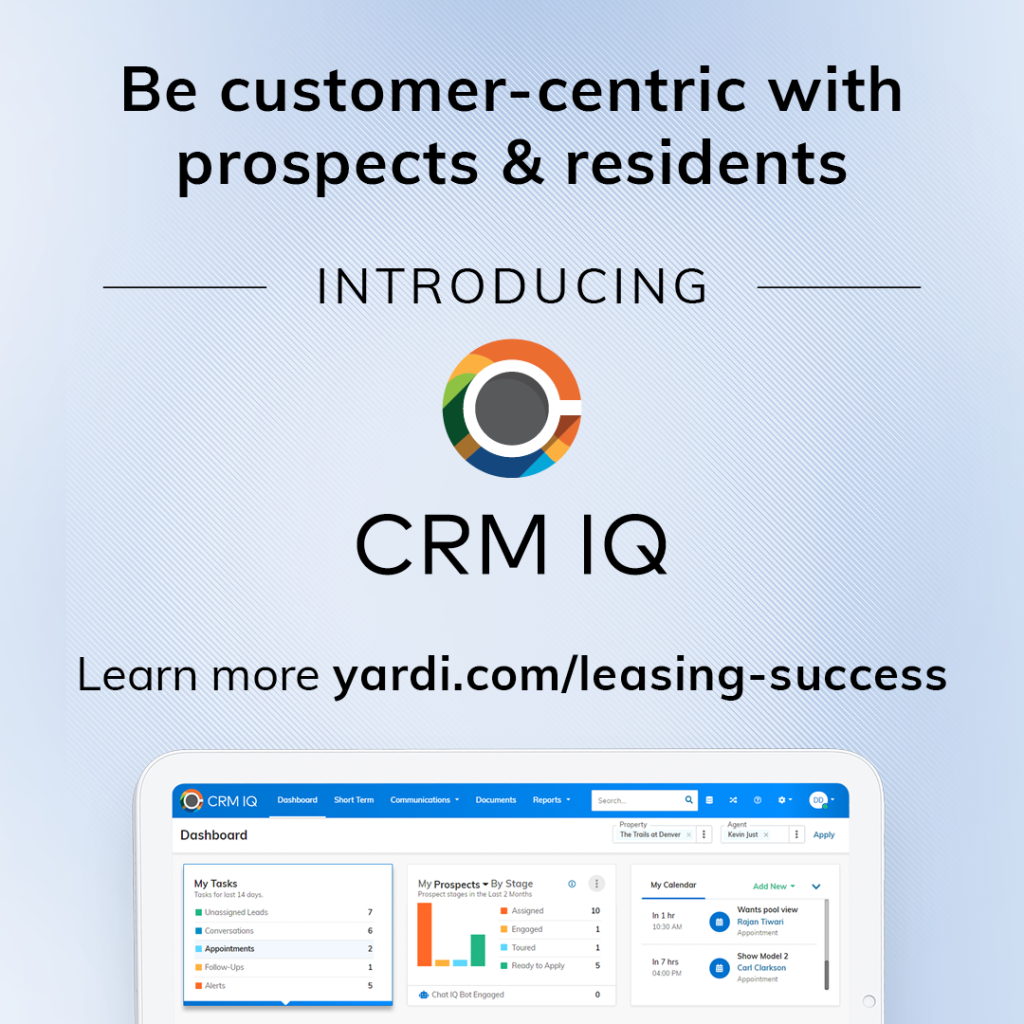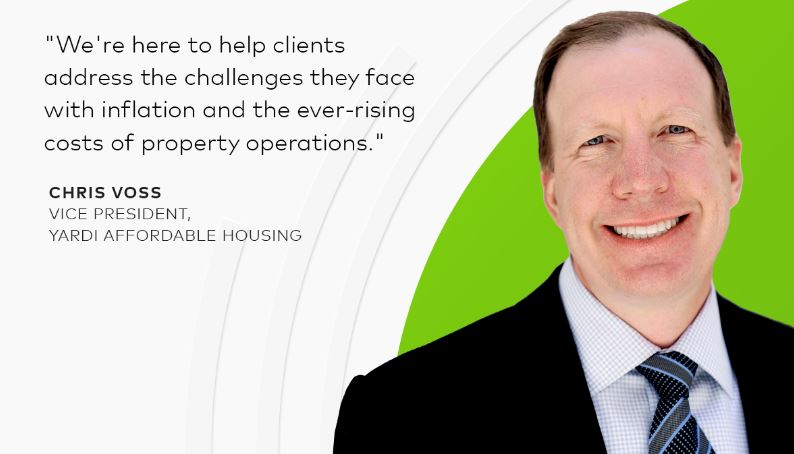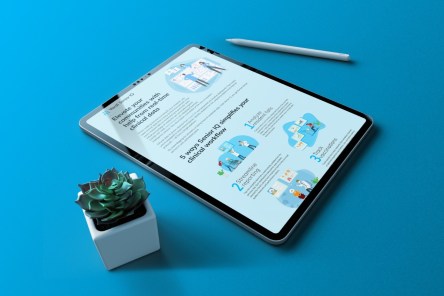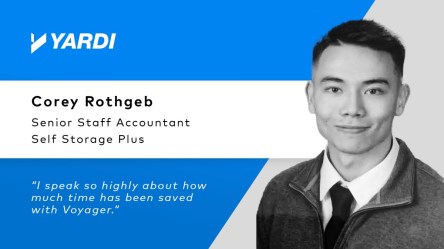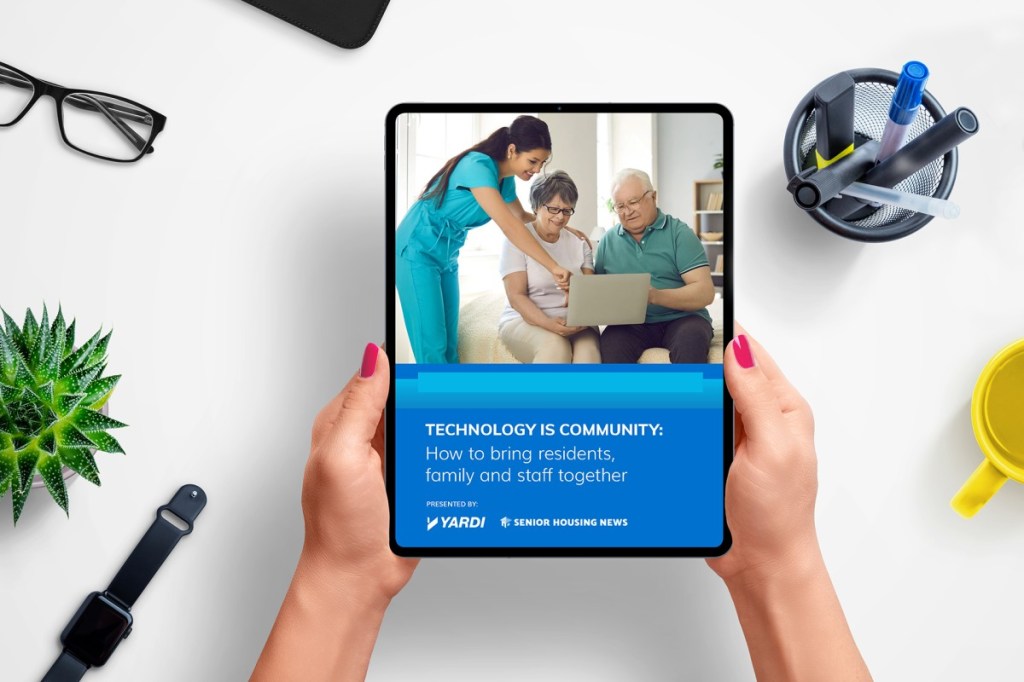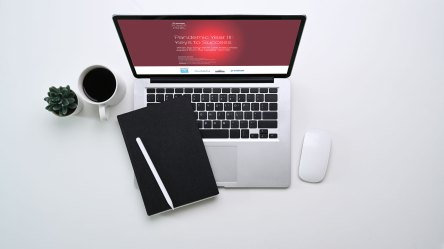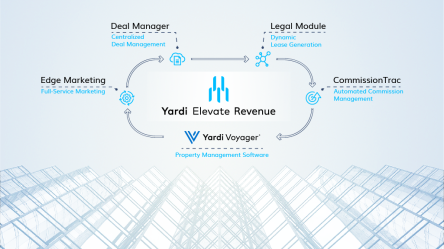It’s the end of the year, and you are starting to feel sluggish. Scrolling social media endlessly or putting off tasks are everyday bad habits that society picks up in December. Why not start now with some New Years’ resolutions and download some productivity apps that can help get you out of that slump? We’ve done some research and found a few apps that can help. Here are four apps to increase productivity for the end of the year and the start of next year: 1. Todoist App (Windows, Mac, iOS, Android, Chrome, Safari, Firefox). Todoist is a task management tool that promises to make complex to-do lists manageable. This app is for individuals, helping you track your tasks and ensure nothing gets forgotten. Key features of Todoist include task management, prioritizing tasks, project goals, and reports. Todoist offers a slick, cross-platform interface that makes it quick and easy to manage functions if you struggle to keep on top of your to-do list. 2. Trello App (Windows, Mac, iOS, Android, and web). Trello is like Todoist, except it is for collaborative teams. Tasks are added and organized on “to-do,” “going,” and “done” statuses, which helps teams keep track of progress. Tasks can be grouped into boards and cards, which contain multiple functions in themselves. Individual duties can be assigned to groups or team members with deadlines and checklists. Key features of Trello include project management, to-do lists, Trello boards, working with anyone, and instant messaging. Instant messaging makes it easy for teams to communicate and collaborate, especially in today’s world of working from home. 3, Zapier App (Windows, Mac, iOS, Andriod, and web). Zapier is a simple automation tool that can save teams vast amounts of time on repetitive tasks and switching between different apps. Zapier sends data between apps like Trello and Outlook, so emails are automatically sent out when anything changes in Trello. Add all these automations together, and your team will collectively spend much less time on menial tasks to focus on more critical ones. Key features of Zapier include the integration of apps, automation of tasks, and custom automation. Zapier is a very gentle introduction to business automation, but it can impact the day-to-day tasks that often slow down collaborative teams. 4. Forest (iOS and Android). This is more of a quirky app to keep you from scrolling social media all day. It is designed, so you stop spending so much time on your phone and/or tablet. Forest essentially gamifies downtime away from your mobile devices. When you want to focus, you plant a “tree,” and the more time you spend away from your smart device, the more it grows. Spend enough time away from your phone to produce an entire forest. The best perk of this app is that you can earn virtual coins by staying focused on your tasks and use them to grow real-life trees from the app. Forest key features include productivity, gamification, and growing actual trees. Forest not only increases a bit of fun into productivity but also helps you make the world a better place while improving your workflow. So far, Forest has planted over a million trees! We hope these apps have given you some inspiration so you can get your productivity game up. These are here to help productivity and not add stress to completing everything on your to-do...
3D Home Update
Aiding Affordable Housing
3D printing has picked up the pace in the housing market, especially with inflation rising. Builders can print houses faster building with more earth friendly resources and fewer staff. Let’s explore the latest updates with 3D homes in the affordable and single-family housing markets. The University of Maine unveiled the first 100% bio-based 3D printed home made entirely with bio-based materials. It features 3D-printed floors, walls, and roofs of wood fibers and bio-resins. The house is fully recyclable and highly insulated with 100% wood insulation and customizable R-values. “Our state is facing the perfect storm of a housing crisis and labor shortage, but the University of Maine is stepping up once again to show that we can address these serious challenges with trademark Maine ingenuity,” said Gov. Janet Mills. “With its innovative BioHome3D, UMaine’s Advanced Structures and Composites Center is thinking creatively about how we can tackle our housing shortage, strengthen our forest products industry, and deliver people a safe place to live so they can contribute to our economy. While there is still more to be done, today’s development is a positive step forward — one that I was proud to support through my Maine Jobs & Recovery Plan and my budget.” The technology is designed to address labor shortages and supply chain issues that are driving high costs and constricting the supply of affordable housing. Due to automated manufacturing and off-site production, less time is required for on-site building and fitting up the home. Printing using abundant, renewable, locally sourced wood fiber feedstock reduces dependence on a constrained supply chain. These materials support the revitalization of local forest product industries and are more resilient to global supply chain disruptions and labor shortages. Using advanced manufacturing processes and materials, future low-income homes can be...
What’s After 5G?
Next Generation Networks
5G, the next generation mobile network, launched in 2020, following in the footsteps of a steady progression of voice capability, call and text encryption, data transmission, video calling, mobile internet. 1G started it all in 1981, 2G came 11 years later, and 3G and 4G made their entries in 2001 and 2012, respectively. 5G figures to impact everything from entertainment and healthcare to farming and robotic factory workers, meeting an ever-growing need for high data rates for virtual, augmented and mixed reality. So is 6G the inevitable next step in this evolution? On one hand, 5G, which promises significantly faster data rates, higher connection density and lower latency, among other things, hasn’t even been fully deployed. But “in the next 10 years, we can expect massive changes and new technologies coming into our lives which will require more and more connectivity at higher speeds as we transfer more and more data,” says Dr. Shaghik Atakaramians, a senior lecturer at the University of New South Wales Sydney’s School of Electrical Engineering and Telecommunications. She continues, “We can imagine completely autonomous systems; or multi-sensory extended reality which integrates the five traditional human senses with the digital world; or real-time remote telesurgery; or complete virtual shopping malls.” ‘Always on a 6G path’ That means, New York City-based technology information consultant Lifewire says, that “technology always pushes forward and standards take a long time to mature, so we’ve always been on a path to a 6G world. We’ve managed to go from 1G to 5G in such a relatively short amount of time, so 6G is just the natural progression towards faster and better wireless connectivity.” Once developed, 6G most likely will involve using ultrahigh frequencies (millimeter waves) of the radio spectrum. It might eventually approach the upper limits...
Student Housing Tech
WiFi Reigns Supreme
Life for a college student today is much different than it was 20 years ago. Students expect to have the connectivity that they are accustomed to at home. As we dive into student housing tech, one priority is clear: college students demand a fast, reliable WiFi connection. As for Mom and Dad, parents will appreciate the security of electronic locks and cameras, especially when it is their children’s first time off to college. According to a recent article from the National Apartment Association (NAA), for student housing management companies, smart technology offers many advantages: It can alert authorities to danger fasterPeace of mind that no stranger or unauthorized visitor can pick up a key or keycard to get inside the buildingProtect staff by tracking movements in and out of apartmentsSave energy during summer and winter breaks with smart thermostats and alerting if there has been a window left openFree staff from security monitoring to do other tasksDetect leaks in fire and water lines or utility disruptions Security transformation Gone are the days of propping open doors with rocks or losing keys frequently and racking up fines. Smart locks at every entrance mean no more keys or even magnetic cards to carry. Codes are also on the way out since many will share with friends and roommates might not feel comfortable anymore. Bluetooth credentials are the new ways to open doors. Keys, fobs, and codes all can be copied but a Bluetooth credential cannot. Since student housing has a lot more likelihood of damage than your typical multifamily complex, cameras all around the building will also provide security and help staff to see if there was a drunken incident or a pet that is not allowed. Smart doorbells and window security in all units along with a video image of the main entrance intercom on the unit’s touchscreen will benefit for student residents to see who is at the door before admitting them. The window security will alert when a window has been opened and will benefit for winter and summer breaks. Smart locks also allow for contact tracing. “With COVID, once a student or other user reports becoming ill, Servitas LLC can trace his or her movements through the building and alert authorities and other recent users of the same doors and study rooms,” says the NAA article. Smart home shortcomings All the benefits of smart home technology come with some drawbacks as well. Can a building’s network withstand 100% of usage? Students come with myriad WiFi demands such as smartphones and tablets, laptops, TVs, gaming consoles, and more. Student housing property management companies are constantly having to upgrade and maintain bandwidth and equipment, and deal with resident complaints if anything goes down for more than a minute or two. For many years, most companies made eight- to 10-year Internet service agreements; “now I won’t do longer than five years,” says David Braden, Servitas senior VP of operations. Student housing provider Landmark decided a wise choice to handle in-unit tech was a hybrid smart-home hub for each housing unit. The hub handles devices like unit and bedroom locks, door/window open notification, leak detector, thermostat, smart dimmable light switches and video visitor management. Residents can also customize with items like a smart speaker or smart outlets. Apps are managed through a touchscreen. Saving time and money Comprehensive software platforms for leasing, rent pay and maintenance requests are saving student housing staff a lot of time and freeing up extra money for other expenses. Students can log into their accounts to sign leases, and select a perfect roommate with a questionnaire that asks compatibility questions. Chatbots are also becoming more common. Artificial intelligence has improved tremendously and can help those who do not take the time to read the marketing website. “In the first quarter of 2022 alone, the bots responded to 52,000 inquiries, saving the company more than 16,000 staff...
Increase Investor Confidence
Using Technology
For an industry where detail, timeliness and accurate metrics mean so much, the investment world still relies too heavily on manual processes and duplicate data entry from disparate systems. Entering data in multiple spreadsheets and relying on disparate systems is inefficient and can be error-prone, especially when sharing information between investment, investor and accounting software. However, technology is a driving factor behind the growth of automated investment management. Investors now expect on-demand service and self-service access to key metrics, capital transactions, important documents and reports. Beyond financials, investors are also asking for an analysis of an asset’s operating and ESG performance. Yardi’s Investment Suite creates better value for investors, increasing investor confidence. The Investment Manager product specifically improves communication between you and your investors, automates the subscription agreement process and provides easy access to performance metrics. The system is available wherever, whenever access is required. Improve communication Managing relationships with existing and prospective investors is vital to growing any investment business and raising capital. Yardi Investment Manager provides a platform that makes communicating with current and prospective investors more efficient, easier and error-free. For MG Properties Group, a single spreadsheet reported contained as many as 450 tabs. “Having the right technology gives you the ability to produce better net operating income, which in turn creates better value for the property and for your investors, as well,” said Joe Anfuso, CFO. With Yardi’s solutions, they are now delivering statements, capital calls, distribution notices and other information online and via mobile devices. “You increase investor confidence by giving them the information they can be confident is correct,” Anfuso said. Organizations benefit from a single connected tool that helps: Centralize communications with existing and prospective investorsManage capital call and distribution notices with investorsEasily send out correspondence, track activities and follow up tasks quicklyEnable better collaboration with new investment opportunities Increase transparency and accuracy Challenges arise when investment, investor and accounting data are maintained in separate systems. Disparate systems or maintaining spreadsheets outside a system increases the opportunity for errors and the time to produce reports and metrics for stakeholders. With an integrated solution, data from the investor to the asset is available, allowing for increased accuracy and visibility for stakeholders. This single source of truth approach is also beneficial when automating other investment functions like fundraising, as all the back-and-forth is contained within one system. Additionally, onboarding is streamlined to provide a quick and easy transition for investors into your platform. By easily compiling and communicating accurate information, Yardi Investment Manager strengthens investor relationships with superior service, as it did for Cohen Asset Management, allowing the company to maintain a lean organization. Scott McGinness, CFO, said, “To be able to log in to Investment Manager and see what trusts or entities a client has invested with, what actual investments those are in, and the returns they’re receiving have been incredible. I can’t put a price on it.” “By being able to deliver information when it’s needed, we don’t have to follow up with the investor later, which is easier on both parties. We get a lot of compliments from investors about our service, and Investment Manager is a major reason for that,” McGinness added. Yardi Investment Manager is a single source of truth for investor and investment information. Access information easily In addition to investment and property metrics, Yardi Investment Manager makes it easy to publish reports, tax documents, subscription agreements and more to investors through an online branded portal. This allows your investors’ self-service access to information. Since the portal can take on your company’s personalized branding, it will offer a customized, highly professional experience for investors. They receive automatic alerts and notifications when new documents have been published and secure access to new investment opportunities in a virtual data room setting. Manage portfolios on the go Yardi Investment Manager provides access to investor and investment information on any device. It...
Introducing CRM IQ
Customer-Centric CRM Software
RentCafe CRM IQ is the latest innovation from Yardi in customer relationship management solutions for multifamily. It puts your customer at the center of the relationship to seamlessly manage prospects, applicants and residents for the entire leasing and resident journey. CRM IQ also provides a platform for centralized leasing offices and enhances the capabilities of other centralized property operations. Built into Yardi Voyager and the RentCafe product suite, CRM IQ has enhanced features that benefit site teams, owners, managers and their customers. Keep reading to explore what customer-centric innovation from Yardi can do for your business. What makes CRM IQ unique? Your customer is more than a renter, and your CRM system should reflect that. CRM IQ doesn’t stop prioritizing your prospects once they convert. Instead, CRM IQ manages your customer interactions through every stage of the leasing and resident journey. With robust features designed to support the full customer lifecycle, CRM IQ is built to guide your prospects into applicants, and your applicants into satisfied residents, ready to renew. The result is a better customer experience made possible by customer-centric software. What’s new with CRM IQ? With features that automate communication and improve visibility across prospects and residents, CRM IQ is a one-of-a-kind solution in the multifamily industry. Here are more details that make it even more unique: Enable centralized leasing office (CLO) processes with customer-centric views and site clustering. CRM IQ has intuitive features that aggregates properties within a central view and shares activities across regional attributes. Save staff hours by helping prioritize the most valuable tasks and utilize remote and clustered staffing offices.Prioritize higher-quality leads and automate lead nurturing with event-based AI. More leads don’t always mean more conversions — this is why CRM IQ prioritizes prospects at every stage of...
Investment Management Trends
Better Investor Visibility
One of the major challenges in investment management is providing visibility to investors. Driving transparency between owners and investors leads to increased investor confidence, reduced risk and a healthier relationship for all parties involved. Communicating with investors and allowing them access to reports and data is critical when it has become evident that in-person meetings will be less and less common. Technology platforms streamline day-to-day tasks and provide greater efficiency to reduce the risk for human error. Chris Barbier, Yardi industry principal, explained this premise on a REF Club podcast. For example, you could simply enter a number wrong into a formula. An employee who operates the spreadsheet could leave the business, and interpreting data could become a strenuous task. Numbers have to be auditable. There has to be integrity to the data as it rolls up the ownership structure, as Barbier explained. “As an investor, you get the confidence of knowing there is a platform behind a number and that it’s not just being calculated manually in a spreadsheet,” he said. Transparency is also vital for members of the organization beyond the accounting department. “Folks in investor relations, portfolio management, asset management, fund management, they may be the consumers of the accounting information but may not have direct access to the accounting system,” Barbier said. These roles speak directly with investors. Internal departments’ visibility can help them pull up data faster, answer questions, provide details, and broaden the overall transparency between the company and its investors. The pandemic highlighted communication as a value proposition with stakeholders even further. Tech solutions have improved collaboration and communication between teams internally, making remote work more successful than most organizations anticipated. But these tech platforms have also allowed for business continuity in which investors still felt connected to the organization. They were still receiving distribution checks or payments in a timely fashion and never lost visibility into the financial status of a company during a very uncertain year. Investors justifiably had more fear or concern about their portfolio over the past year. Yardi addresses those questions with their investment management solutions. Investors are often asking, “do I have that in my portfolio?” as Barbier explained. “Is that impacting my return? How is that impacting my investment?” Barbier said these were the common questions from investors. “We’ve done a lot in the investor communication side in the past year because we’ve seen clients want to adopt the technologies. COVID accelerated that, but some clients were already going in that direction,” he added. Tech platforms such as Yardi’s investment solutions are a driver for growth and operational performance. Organizations can scale, build value and gain investors without adding staff or additional costs for multiple solutions due to the added efficiency of a single connected platform. Additionally, as Barbier explained, tech provides a new level of asset oversight and risk management, with better access to asset-operational data. “New tools provide that visibility, so [you have] more proactive discussions and less reactive. That starts to gain some efficiencies over time in terms of getting ahead of things that come up at the operational level,” he said. Allowing clients to find ways to squeeze additional value and return yield from the assets. Investors want to have the ability to answer their questions and find the data they’re looking for when they want it. “They’re checking in, at least monthly, to see their positions, their information and where they are with their investments,” Barbier said. But the key is that investors are more involved and more knowledgeable about their standing now than when clients were passively sending information out to investors via email or other avenues. Tech platforms provide that window for self-service that investors seek. “We’ve seen a trend for a few years now in the U.S. where many investment managers are moving from best of breed to a single integrated solution,” Barbier said. Owning the data...
Heavy Metals
Crucial Tech Elements
The 17 rare earth element (REE) metals comprise the building blocks of much of the technology we depend on daily. These elements, which aren’t actually rare but are sparsely concentrated in minerals, include the exotically named dysprosium, neodymium, lanthanum, praseodymium and terbium. Encompassing properties that make devices lighter, faster and smarter, REEs “let smartphones glow and ring and buzz, make fridges cold, lightbulbs bright and TVs vibrant,” in the words of Casper (Wyo.) Star Tribune reporter Nicole Pollack. They’re also present in the screens on smart phones, computers and flat panel TVs, the motors of computer drives, defense systems, hybrid and electric car batteries, new-generation light bulbs and much more. With greater investments in clean energy, demand for REEs could increase six-fold by 2040, according to the International Energy Agency. An electric car, for example, needs six times the mineral inputs of a conventional vehicle and a wind plant requires nine times more minerals than a gas-fired plant. A major problem with these elements is that mining, separating and refining them both requires and produces large amounts of toxic materials. Up to 95% of this work is done in China, by some estimates. Harvard International Review reports that for every ton of REEs produced, the mining process yields more than 28 pounds of dust, up to 423,000 cubic feet of waste gas, 2,649 cubic feet of wastewater and 1 ton of radioactive residue. Recycling, partnerships could ease supply strains The environmental implications of REE harvesting have prompted experts to seek alternate ways to meet ever-growing demand. Recycling REEs from discarded electronics rather than mining is one option, using new processes that enable extraction with minimal use or creation of pollutants. Harvard researchers are working on extracting REEs using bacteria rather than toxic chemicals, while...
Benefits of Integrated Software
In Senior Living
The last two-plus years have changed the senior living industry, presenting unforeseen challenges for providers. Mainly, they’re tasked with finding effective systems and strategies to meet the needs of residents, families and staff as the industry navigates a new normal. So which solutions are important, now more than ever? For providers and other healthcare leaders, implementing a software solution may have the greatest impact. According to research like this piece from Ziegler, the pandemic has accelerated the adoption of tech-enabled solutions across the healthcare industry like never before. Implementing the right software solution is key in streamlining operations, increasing resident satisfaction, delivering quality care and the list goes on. But not just any software solution is beneficial. To meet the needs of their communities, providers need a full suite of integrated tools that are mobile, intuitive and efficient. Benefits of integrated software When selecting senior living software, it’s important to know the difference between disparate and integrated systems. With disparate tools, you’re operating communities from several platforms that don’t necessarily speak to each other. That leads to time wasted navigating multiple systems, challenges in bringing staff up to speed, the risk of pulling inaccurate data and more. Ziegler’s white paper notes the importance of choosing a single connected solution to stay ahead of the curve. With an integrated system, every facet of your business is united in one place. That offers ease of use for staff, reduced costs and time savings — all leading to streamlined operations and enhanced care. That’s where the Yardi Senior Living Suite comes in. As an integrated system that eliminates the gap between senior living property management and clinical services, the Senior Living Suite gives providers everything they need to manage their communities. The key differentiator? The union of property management, finance, marketing, business intelligence and resident care on a single platform. At a glance, here are five ways the Yardi Senior Living Suite sets your communities apart: Combine property management, finance and business oversight for improved efficiency, reduced costs and responsive resident services with a comprehensive management tool, Yardi Voyager Senior HousingKeep residents and families connected through a secure online portal, RentCafe Senior LivingMake smarter, faster decisions with actionable information for your entire portfolio through Yardi Senior IQ, a business intelligence solution for senior livingKeep health records error free, limit liability and empower staff to deliver the best resident care with Yardi EHR, a full-service electronic health record solution Attract new residents, nurture your leads and increase resident retention with RentCafe Senior CRM, a mobile-friendly sales and marketing solution Learn more about Yardi software for senior living There’s no denying the importance of software solutions for businesses — especially those that provide interconnected tools. This holds true for the senior living industry, both through the pandemic and beyond. Still curious about how a single connected solution can transform your business and care services? Explore the Yardi Senior Living Suite and reach out to book a demo with our...
Affordable Housing Tech
Insight from Chris Voss
Editor’s note: The following interview was originally published on The Breezeway, the official blog of Yardi Breeze. Chris Voss is currently a vice president at Yardi, but he’s been working in affordable housing for over 20 years. In that time, he’s worked on the investor side of the business, putting together tax credit deals to help developers get their properties built. He later shifted gears and spent a number of years working directly with operators. He’s experienced in helping property management companies optimize and modernize with the help of affordable housing and compliance software. Chris is the perfect person to discuss the future of affordable housing. Keep reading to see how he’s helping Yardi revolutionize affordable housing and simplify compliance. What’s the goal of Breeze Premier?We’re looking to bring everyone on our legacy systems over to Yardi Breeze Premier. This will help us better support our clients with newer software and get upgrades out faster. It also provides a portal for applicants and residents to apply online, make payments and enter work orders. Are there any features that tend to convince people to switch or migrate?One of the bigger points of interest for our residential clients is the ability to launch branded corporate and property websites with RentCafe. This is our marketing and leasing solution built into Breeze and Breeze Premier to support online leasing. It also includes options for integrated screening and renters insurance. Historically, rent collection and work order management have been done manually, so to have an integrated system is really compelling. The most-used feature of RentCafe is probably the resident portal, which automates rent collection and centralizes online maintenance requests. And residents love the RentCafe Resident app. Looking back, what made the previous generations of Yardi software relevant in their time?Years ago, Yardi Genesis and Yardi Genesis2 were some of the most powerful property management systems around. This was especially true for small to mid-sized companies. They didn’t need everything a system like Yardi Voyager had to offer. However, a lot of that functionality was built in to help clients with activities in the back office such as bookkeeping, financial reporting and resident tracking. The reality is that a lot of employees at smaller affordable companies wear multiple hats. They do more than back-office activities. That’s where Breeze Premier come in. What’s making Breeze Premier relevant in our time?In addition to accounting, operations and reporting, our latest property management software includes built-in marketing and leasing tools plus a host of optional add-on solutions to do even more. We’ve implemented text messaging to better communicate with residents and introduced a CRM queue to track customer communications and initiate follow-ups. We leverage artificial intelligence to communicate with potential residents using our RentCafe Chat IQ chatbot. We provide the option for clients to outsource their utility billing and utility invoice processing, among other features. Not to mention, we just rolled out maintenance call center services to Breeze Premier clients with RentCafe Connect. If you were to reimagine affordable housing, what might it look like?Reimagining the future of affordable housing is really about finding ways to reduce the costs and complexities of operations. It starts by reducing the friction that is involved with finding and applying for an affordable home today. RentCafe.com is an internet listing service available for our residential clients. Even a person who wants to move to a different state can now easily apply online. They can also complete the entire certification process without ever having to walk into that out-of-state property. We’re also trying to eliminate fair housing complaints from even arising. With RentCafe Affordable Housing, the certification and application process are done online, so the manager never has influence over the application process. So even if that household ends up being denied, they can’t point back and say the property manager was discriminating against them. Put it this way: In every respect, the future...
Get Clinical Data
With Senior IQ
When making decisions to benefit senior living residents, providers need clinical data that is easy to find, interpret and share. With Yardi Senior IQ, an integrated business intelligence solution, intuitive clinical data is available at the click of a button. Ready to see how it works? Simply put, clinical data is drawn directly from Yardi EHR and presented via attractive dashboards. Our latest infographic showcases the details — including five ways Senior IQ simplifies your clinical workflow. Five ways Senior IQ simplifies your clinical workflow Senior IQ is built to streamline your clinical workflow from start to finish. With this single connected solution, you’re equipped to: Analyze resident falls: Capture metrics such as falls categorized by time of day and falls resulting in injury — uncovering what is jeopardizing resident safety — then develop action plans to prevent future incidents.Streamline reporting: Tap into insightful data that is automatically updated from the previous day. Each dashboard’s data points were carefully selected by Yardi’s clinical and compliance team to help you track quality measures and performance metrics.Track vaccinations: Track exactly how many residents have accepted, received or declined important vaccinations. Use vaccination rates to make critical decisions regarding health and safety protocols.Monitor antipsychotic usage: Check which residents are receiving antipsychotic medications, then verify that each resident has a proper diagnosis to ensure no antipsychotics are being administered without cause.Unite clinical and financial data: Access census information, financials and clinical data in one place. Use these comprehensive insights to make informed decisions for your entire business. We can’t forget to mention the clinical snapshot feature, an all-in-one dashboard that organizes your most needed measures like new orders, recent falls, past due assessments and more. Improve care, boost productivity and reduce costs With clinical data readily available, Senior...
Self Storage Insights...
With Corey Rothgeb
Corey Rothgeb is the senior staff accountant for Self Storage Plus, an independent business that generates $3.6 million in annual revenue. We talked with him about what it takes to succeed in the storage industry, how he addresses industry challenges and the ways Yardi Voyager saves Self Storage Plus enormous amounts of time and energy. Tell us a little about yourself. What’s your background, and how long have you been in property management?I’ve been with Self Storage Plus since August of 2020. Prior to that I lived in San Diego, California. I studied at the University of California San Diego and received my bachelor’s in economics in 2019. I got my foot in the door in property management with a publicly traded REIT in San Diego. That’s where I practiced on property management software. I worked there for about nine months as an accounts payable clerk and financial administrator working on budgets. Then I made the move to the East Coast in August of 2020 and started as a staff accountant at Self Storage Plus. I’ve since progressed from staff accountant to senior staff accountant and currently hope to progress to controller. There have been opportunities to grow tremendously in property management, and I love the whole real estate industry in general. What challenges does property management software solve for your business?Voyager helps with reporting on our end. I think the biggest challenge we faced when the company switched to Voyager in 2020 was just having processes in place, and Yardi really helped provide structure for those. The invoicing and reporting automation in general provided a kickstart to getting all of our processes in place. What features in Voyager are helping you solve those challenges?The ability to run and automate specific reports. In fact,...
Home Work
Tech Creates New Options
Many companies are returning workers to their offices and sending them to conferences and other gatherings. Is remote work, done by more than 70 percent of workers who can work remotely according to Pew Research Center, passing or permanent in the work environment? Just a decade ago, working from home was the exception, usually allowed only in select cases. It took time for teleconferencing technology to advance to the point where occasionally working from home became more acceptable and normal. “Ten years ago, remote employment basically meant a telemarketing or customer service position at below minimum wage,” said Samantha Lambert, director of human resources for New York City website design company Blue Fountain Media. “It rarely was connected with a full-time career.” Then came the pandemic. The outbreak prompted many employers to shift to a predominantly remote work model to limit spread of the coronavirus and comply with distancing mandates. Along with supporting public health, companies saw an opportunity to save money by cutting down on expensive office space while allowing workers the freedom to create their own schedules and work from wherever they please. Eighty-three percent of employees responding to a workplace survey in 2021 reported that a hybrid model combining remote with time in the office that accommodates both business needs and employee desires is optimal. Tech options Zoom, Microsoft Teams and other systems gained new prominence during the pandemic and cemented remote work into the American economy. “Now, technology affords us the ability to get the same job done, no matter where in the world we are. [It has] enabled us to be in contact with co-workers or clients at any time,” Lambert says. “This technology has advanced so quickly that many companies have even done away with traditional offices and instead...
Technology Is Community
Senior Living White Paper
Senior living operators build community, and community is increasingly defined by its technology — the tech used by residents, staff and family. These integrated systems are a community’s lifeblood, enhancing key aspects of the day-to-day experience for both residents and staff. They help staff communicate, empower residents and ease concerns for family members. Ultimately, these systems keep senior living communities in sync. That’s the focus of a brand new Yardi-sponsored white paper, Technology is community: How to bring residents, family and staff together. Published by Senior Housing News (SHN), the resource offers an inside look at how providers are using tech to connect their communities in creative ways. See below for a snapshot of what the white paper entails. Using tech to connect residents, families and staff While the COVID-19 pandemic and subsequent restrictions changed communication in every industry, the pandemic’s risks to seniors made communication in senior living even more important, and more challenging. Today, operators need ways to connect families with their loved ones in communities, and ways to help staff deliver quality care no matter the circumstance. That’s why it is crucial for operators to implement technology tools that streamline communication. Drawing insight from operators Validus Senior Living and Maplewood Senior Living, the white paper shares how solutions like RentCafe Senior Living — a secure online portal — help staff members communicate with each other, with residents and with resident family members. Additionally, how this integrated solution helps users make online payments, review health and wellness information, sign forms electronically and submit maintenance requests. From Validus, you’ll learn how RentCafe Senior Living works to improve communication, streamline billing and even enhance medical care. Through the Maplewood spotlight, you’ll see exactly how this Connecticut-based company is using RentCafe Senior Living to enrich residents’ quality of life in four key areas. That includes socialization, entertainment, safety, exercise and health tracking. Top benefits of improved communication systems New technologies have improved senior living for residents, giving them enhanced experiences in their finances, health, socialization and more. Leading communication tools have also improved the experiences of staff and family. With RentCafe Senior Living, three of the industry’s major stakeholders — residents, staff, families — share a communication tool that is easy-to-use and wide-ranging in impact. Areas of impact include: Resident surveysEasy community communicationPaperless paymentsActivities and wellness calendarsHealth updates for familiesElectronic signatures and document management Explore the white paper for a detailed look at each of these areas. Read more As the pandemic has largely affected senior living communities, it’s imperative for operators to implement technology that enables communication anytime, from anywhere. Read the white paper in full to learn how tech solutions like RentCafe Senior Living make the...
Rock-Solid Learning
Boulder Housing Authority + Aspire
The value of learning management systems as a catalyst for organizational improvement was the topic of a recent webinar hosted by Patty Evans, industry principal for Yardi Aspire, and featuring employees of the Boulder (Colo.) Housing Authority. Learning management systems can promote stability among an increasingly restive employee population. Evans noted that more than 47 million Americans voluntarily left their jobs last year. A recent study of U.S. workers by Cengage Group showed that 64% of survey respondents identified training as integral to their role, while 78% of employees who quit in the preceding six months took an online course to prepare for their next job. An Amazon-Gallup study found that 47% of employees are “extremely interested” in training that upgrades their skills and advances their careers. “It’s clear that if employers do not provide adequate training, employees will find ways to develop the needed skills and that may mean getting a job elsewhere.,” Evans said. “Employers need to have a new mantra: If we want to retain our staff, we have to focus on skills development.” These factors have prompted BHA and other agencies to adopt Aspire, an online learning management system that automates the delivery of personalized learning experiences to half a million users worldwide. Along with live event management, Aspire includes about 1,300 courses on Yardi software, HR topics, compliance and safety, professional skills development and more. Its content is routinely upgraded to reflect changes to Yardi software, industry standards, and federal and state legislation. Learners seeking to refine specific skills can use the site-wide search tool or interactive catalog to locate and sign up for training on more than 200 industry skills and review recommended training options for their current or desired role. Boon to virtual onboarding Along with offering workers immediate skills practice and real-world applications, Aspire also benefits BHA and other organizations as a virtual onboarding tool that automatically assigns relevant training and resources for success to new employees as they begin new roles. The system also automatically recalibrates training assignments as employees transfer to new roles or locations throughout their career. “We can customize the Aspire content with unique company messages such as BHA’s values and mission. This helps make a great first impression of the organization with new employees,” said Carrie Murphy, BHA’s learning management system manager. “You’ll be surprised how much you can do with Aspire’s proprietary authoring and communication tools to make your staff feel not just welcome but connected to your organization. With a little imagination, your employees can dive in and immediately interact with your organization through Aspire,” Evans added. Benefits of automation and personalized learning The webinar revealed that employee engagement and efficiency offered by Aspire holds increasing relevance in today’s work environment. “Since the start of the pandemic online learning has seen a massive increase in participation and continues to grow. Companies benefit when employees feel confident and employees thrive when they’re given opportunities to learn new skills, receive feedback on their training performance and participate in a learning community,” Evans said. Aspire helps BHA’s training administrators by automating time-consuming, repetitive processes, from training announcements, registration management and training and skills assessments to feedback collection and recommended next steps. It also delivers new organizational efficiency and direct cost savings with self-paced content that is automatically developed and maintained by Yardi and industry experts. Trainers can spend less time developing and delivering introductory information and beginning skills and focus more time training advanced topics and imparting institutional knowledge. “Automated training management saves us a lot of time,” Murphy said. Rosemary Mendenhall, a community manager for BHA, offered the user’s perspective. “I love that I can personalize my learning with Aspire. I can pick the classes that I want, with my managers assigning me additional classes that tie in with my job and experience,” she said, noting that the variety of training methods – including highly interactive content,...
Power Panel Ebook
McKnight’s & Yardi
From staffing to compliance to technology, there’s no shortage of pressing topics circling the senior living industry. And the latest McKnight’s Power Panel — Pandemic Year III: Keys to Success — gathered experts to discuss it all. The online roundtable prompted panelists to debate today’s issues and offer solutions for the year ahead. And to help a larger audience access the insights, McKnight’s put together a fresh ebook that presents the biggest takeaways from their conversations. That ebook is available now. Whether you attended the roundtable or not, the ebook is worth a read. See below for a quick highlight of what you’ll find: New Mcknight’s Power Panel ebook With panelists from different verticals in long-term care, the McKnight’s Power Panel was full of varying perspectives. How will operating conditions continue to shift with the pandemic? How is the “new normal” changing again for providers? These types of questions received a range of answers throughout the roundtable, and lucky for you, they’re recapped in the ebook. Featuring insights from Yardi expert David Bellew, read the ebook to learn: Technology’s role in the industry todayPredictions for a post-pandemic landscapeStrategies for the futureAnd more About panelist David Bellew David Bellew is an accomplished leader in the healthcare industry. Currently serving as the Director of Client Services here on the Yardi senior living team, David has over 20 years of experience implementing enterprise software systems. Through years of dedication, he has become highly skilled in requirements analysis, as well as managing implementations for ERP and clinical systems. If you have questions for team Yardi about our solutions in senior living, we encourage you to reach out to us. Download the resource Yardi is pleased to sponsor events like the McKnight’s Power Panel that spark insightful conversations in...
Yardi Canada R&D...
Innovation Update
Last fall, Zach Scott, vice president of programming for Yardi Canada, provided our readers with an illuminative look at the role of his engineering team on Yardi’s most cutting edge product offerings. In the research & development realm, progress moves fast, so recently we brought Scott back for an update on project progress and current initiatives. Let’s kick it off with machine learning, which is now being practically applied to multiple Yardi products, with more to come in the near future. Zach, tell us about machine learning’s role in the Yardi Full Service PayScan experience? Scott: On this machine learning test, we have almost 200 clients live. So far this year, we have processed 1.3 million invoices. We went from 290,000 invoices per month in January, to 390,000 in February, to 450,000 in March. We’re anticipating growth to 600 clients by mid-year. This has been a huge success. What machine learning does is automatically extract a half dozen key fields from the invoice image, such as invoice number, date, property details, vendor info, phone number, email address, and more. It pulls all of that directly off the invoice. The overall accuracy is typically around 75 to 80 per cent. How about the use of machine learning in the Yardi Marketplace on-boarding process? Scott: When new vendors are onboarded into Yardi Marketplace, it often means uploading massive spreadsheets that contain more than 20,000 product barcodes (SKU). Before machine learning was applied, this was a manual process that meant personnel were sorting through every SKU to place them into three categories. That means 60,000 category assignments had to be manually selected. This used to take weeks to complete. Thanks to machine learning, we can now categorize 20,000 SKUs in about 15 minutes. After that initial sorting,...
Connected Debt Management
Single Platform Benefits
Wondering how to simplify and increase accuracy for debt management? You’ve probably been hearing about the benefits of a single connected platform. Whether you’re a borrower or lender, there are multiple aspects of debt to manage. Key processes include calculating amortization schedules for simple and complex loans, tracking collateral and managing critical dates and covenants. Borrowers need to track debt against real estate collateral and account for loans by paying lenders through invoices or journalizing transactions. When done manually, these processes are time-consuming and prone to error. It’s also inefficient and risky to access information from multiple systems and databases. Read on for best practices to streamline debt management using a single connected solution. Eliminate spreadsheets and disparate systems Whether your interests are in managing loan information or debt investments, it’s critical to gain transparency from the investor to the borrower. You need to closely track debt from the borrower along with key deliverables and covenants with lenders. Going paperless and using a system that centralizes all loan data and provides accurate information is the first step for creating greater efficiency. By moving away from manual processes, you gain transparency, mitigate risk and increase efficiency through automation. By centralizing tracking of all loan terms in a single connected system, you can reduce manual errors and ensure data accuracy. Gain visibility into critical dates A key component for clients with debt investments is visibility into critical dates regarding when things are due to be received by the borrower and meeting compliance for key financial covenants. This capability mitigates risk by ensuring deliverables are sent to lenders on time, and tracks collateral and critical dates with notifications. With a single platform that centralizes all debt information, you can provide access to internal stakeholders for the entire loan investment portfolio. You also get deep insight into key metrics and can monitor the status of compliance with all covenants. Automate accounting and reporting For debt investments, you need complete insight and the ability to automate transactions from the borrower through the investment structures to investors. A connected software platform can deliver that for you, as well as enable you to track, account for and accurately calculate all types of investment loans and structures: interest-only, principal and interest, draw loans, revolvers, letters of credit, inter-company, syndicated loans and more. You can also streamline financial consolidations, partner transfers, fund rebalancing, allocations and other processes. For lenders with debt funds, syndications or other debt investments, whether servicing themselves or using a third party servicer, an integrated solution will provide full insight into the performance of this asset class and can automate accounting through the investments to investors. For those lender clients servicing their own loans, you can facilitate collections and secure automation of receipts. A single connected platform enables you to deliver timely and accurate reporting for all ownership structures. You can easily manage the complexities associated with numerous entities and levels between investors, investments and assets. Automate payments With a connected debt management platform, borrowers can automate payments to lenders and gain full visibility and audit trails into payment history. You can easily review historical and outstanding charges and the principal balance of every loan with drilldown into transaction details. Integration with accounting at every level of the ownership hierarchy provides utmost efficiency. Debt investors can automate transactions from the borrower through the investment structures to the investors. In addition to calculating principal and interested, a connected platform will also track funded and unfunded reserves and amortization of fees as well as payment of necessary taxes and insurance at the collateral level in certain regions. Automate billing For client lenders servicing their own loans, a connected platform can automate borrower billing and increase visibility for internal stakeholders by tracking collateral and critical dates. If you have debt as an investment, you can more easily manage and service your debt including billing borrowers and managing capital...
Step Up Security
CISA tips to thwart phishing attempts
Perhaps you’ve noticed it in your email inbox or text messages: there is a recent uptick in the number of attempts to gain private information that compromises your personal and financial security, as well as that of organizations and corporations. According to a recent report from Proofpoint, email-based phishing attempts became increasingly successful in 2021, as did ransomware attacks. As many as 83 percent of organizations said they experienced a successful email-based phishing attack in 2021, compared to 57 percent in 2020. These upticks appear to be continuing in 2022. Across a variety of industries, phishing attacks are becoming more prolific and targeting employees from entry-level to executives. That means it’s more important than ever to protect yourself and your business by exercising vigilant technology safety protocols and learning best prevention practices. The U.S. Cyberinfrastructure and Security Agency (CISA) offers the following tips that can help you and your organization avoid these attacks. Understand the threat. Phishing is a form of a social engineering attack, which means that common social norms are used to gain and compromise information about a company and its technology systems. Messages claim to be legitimate communications from vendors, banks, employees and other business contacts, but are really fraudulent attempts to obtain confidential information from recipients. The imposter may even offer information that claims to support their identity. Be skeptical, even when a message appears to be from a trusted source. An attacker may send email seemingly from a reputable credit card company or financial institution that requests account information, often suggesting that there is a problem. They could also pose as a vendor who needs account information changed or even an internal employee who claims to need verification of information. When users respond with the requested details, hackers can...
Elevate Revenue
A Way to Optimize Returns
Yardi has launched Elevate Revenue, a CRE solution stack that streamlines the entire deal lifecycle from lead to lease. Specifically intended for owners, asset managers and leasing teams, the all-in-one solution was designed in collaboration with commercial experts and industry leaders. The end-to-end portfolio management suite, supported by decades of real estate research and software development knowledge, optimizes the deal workflow through powerful automation, enhanced team collaboration and extensive insights. Providing unmatched portfolio visibility, Elevate Revenue seamlessly integrates marketing, leasing system and commission management tools into one centralized platform. With Edge Marketing, real estate professionals can effortlessly market listings and generate verified leads through Yardi’s rapidly growing CommercialEdge Listing Network. From there, Deal Manager further streamlines leasing operations by enabling users to smoothly manage prospects and oversee each stage of the deal flow, while automatically comparing deal economics to approved budgets and prior leases. Additionally, to simplify the legal process and easily track legal documents, the Elevate suite includes Deal Manager Legal Module, an intuitive tool that allows users to automatically generate standard lease agreements directly in the application. And it doesn’t stop there. CommissionTrac, Yardi’s commission management tool, efficiently rounds out the leasing process by automatically tracking and paying the commissions of both in-house and third-party brokers. Elevate Revenue is fully integrated with Yardi Voyager thanks to Yardi’s built-in CRM — this smooth connection ensures maximum portfolio and deal pipeline oversight in real-time. Voyager clients can sync properties, spaces and availability across their portfolio. Listings are automatically published based on lease expiration dates or automatically unpublished once a tenant is activated for a specific space in Voyager. In October, Macerich — an owner, operator and developer of retail and mixed-use destinations throughout the U.S. — leveraged Deal Manager and Edge Marketing solutions to...


